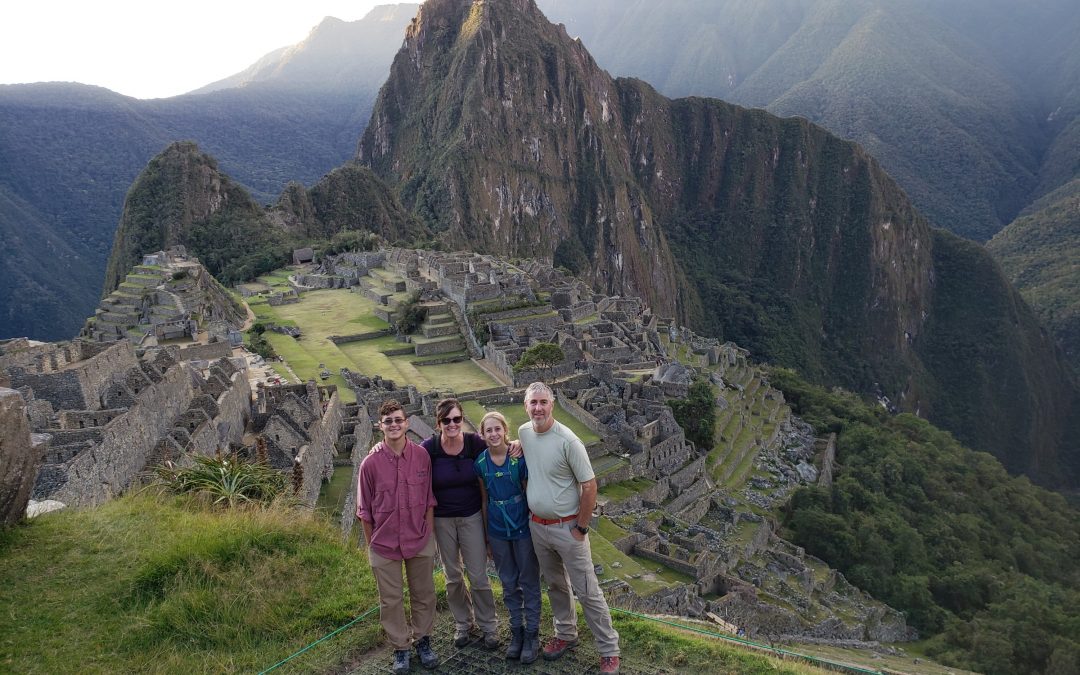
by Jason Bowles | Jul 28, 2019 | Jason, Peru, South America
We arrived at Machu Picchu after completing the Inca Trail.

Spectacular! Arriving late in the day, we missed the crowds. The following day, though, we saw the changes that come with 20 years of increasing tourism: hour-long waits to board the bus, one-way paths, restricted access and a continuous mass of people snaking through the ruins. This made us appreciate hiking the trail even more, as we were able to visit many sites without anyone else around.

by Jason Bowles | Jul 21, 2019 | Jason, Peru, South America
It is possible to drive from Cuzco to the Amazon basin, but it is quite a journey. We left our hotel at 4:30am, had breakfast in Paucartambo, and ascended even further to 13,000 feet before descending a steep, winding road through a cloud forest.

We still had a long way to go.
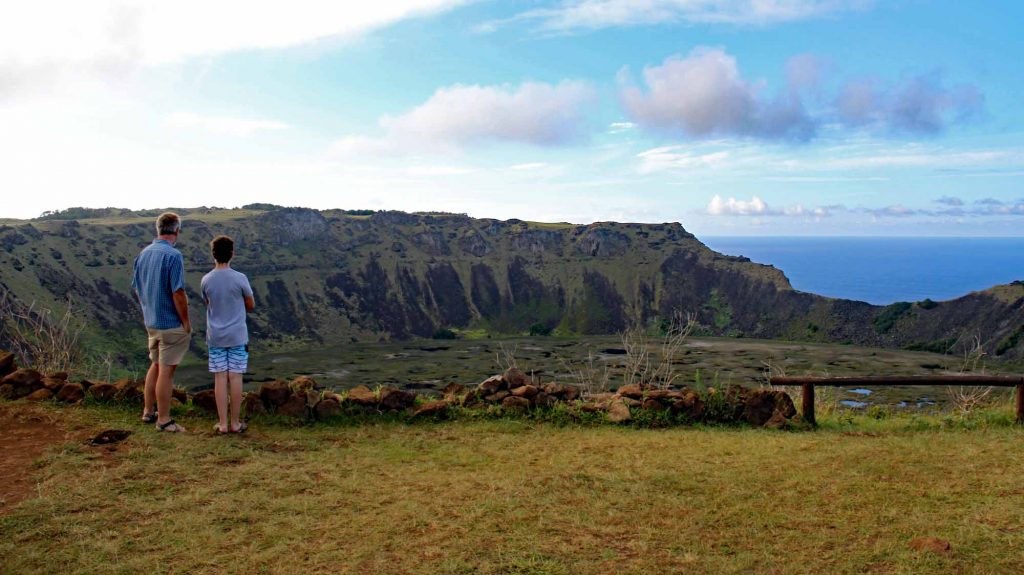
by Jason Bowles | Feb 21, 2018 | Jason, South America
Rapa Nui seemed appropriate for our final destination on this 6-week journey. Southern Patagonia and Antarctica can certainly be described as remote, and Rapa Nui practically defines the word. It was a 5-hour flight from Santiago to reach Rapa Nui (also known as Easter Island); the only other flight arrives once weekly from Tahiti, which is even farther. The nearest populated island, Pitcairn, is almost 2000 kilometers away, and this is an island of only 50 inhabitants.
It is obvious on arrival that Rapa Nui is a Polynesian island: green island, blue ocean, fragrant lei welcome. It is also obvious that this isn’t Hawaii, or even Tahiti. No big hotels, no fancy restaurants, no fancy anything, really. Rapa Nui is small, only 24 kilometers across at its widest. There are as many horses wandering wildly on the streets as there are cars. The harbor contains only a dozen small boats with outboard motors. Air conditioning has yet to reach the island, a luxury that was missed in the heat of their summer. It is not a beach destination, although it does have a nice beach–but only one. Finally, it is quite clear that this isn’t Hawaii when you are greeted by a Polynesian offering you a lei–in Spanish.
Obviously, you don’t travel to Rapa Nui for any of these things. You go for the moai–the iconic heads sculpted from volcanic stone. And they are everywhere! Nearly a thousand of them are scattered around the island. Two stand in the middle of town–Hanga Roa–overlooking the harbor. Several stand before Anakena, the lone beach on the island. There used to be a Moai at the top of the Rano Kau crater, at the ceremonial center of Orongo, but that one now resides in the British Museum.

Rano Kau Crater, near the ceremonial village of Orongo.
We spent days traveling around the island, trying to catch as many of the historic sites as possible. By far the most spectacular, and largest, collection of moai are found at Rano Raraku, the volcanic crater where they all were quarried. This is where moai in all phases of construction and deterioration are strewn across the green slopes of the crater, with unfinished projects still firmly anchored in the open quarry.
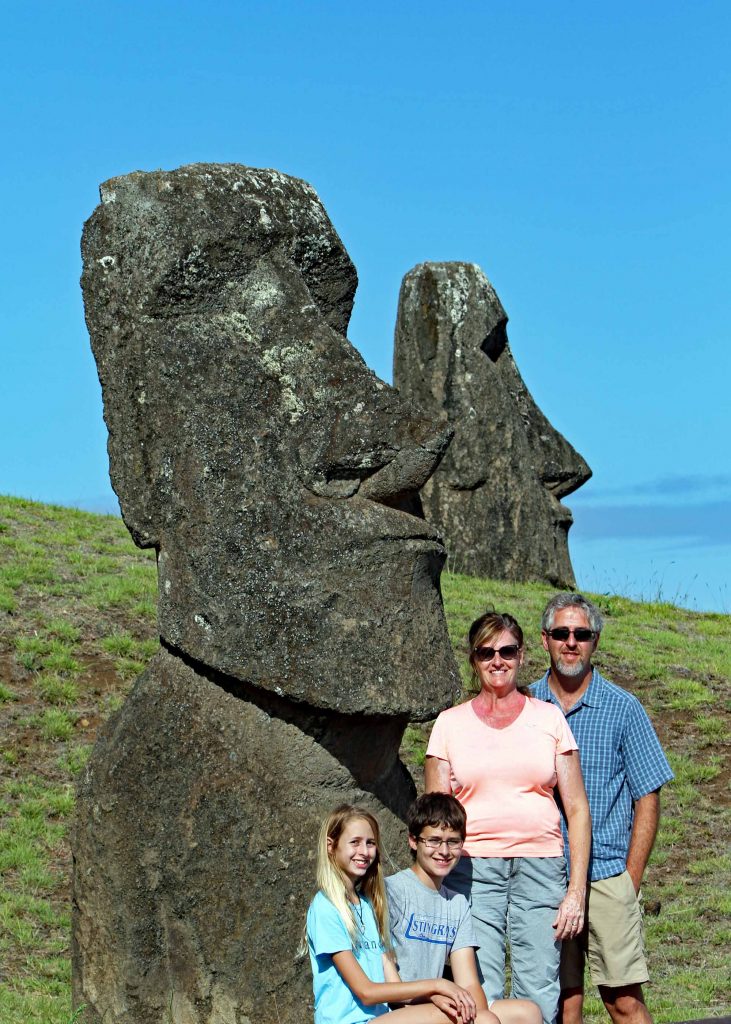
Rano Raraku
After weeks of travel, Rapa Nui was also a place for rest and relaxation. We went diving one day and spent another at Anakena working on our sunburns. Except for the last, a spectacular end to a great journey.
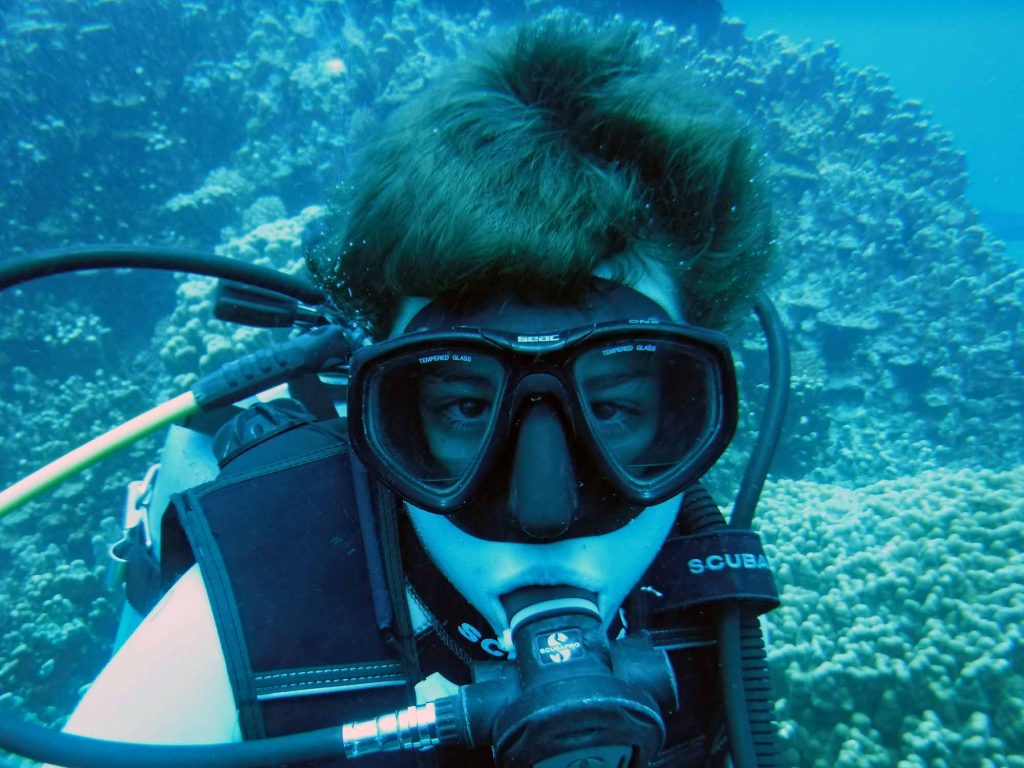
Diving Rapa Nui

by Jason Bowles | Feb 8, 2018 | Jason, South America
How to describe Patagonia? It’s different. Different than other places, different than I expected. Different, but in a good way. I envisioned Patagonia to be a far-off place with towering mountains and glaciers, a place of exquisite beauty. We certainly found those things in Patagonia, but they are not Patagonia.
In preparation for this journey, I read Bruce Chatwin’s In Patagonia, a travelogue he wrote 40 years ago. I very much enjoyed his book, but it was very different from what I was expecting. Like Patagonia. Instead of cataloguing and describing the immense natural beauty of the place, he focused on the odd collection of people that have been drawn to Patagonia over the years and illustrates this with anecdotes of the odd collection of people he met. Nowhere does he mention Torres Del Paine, but several chapters follow the trail of Butch Cassidy and the Sundance Kid through Patagonia—where they spent some years—before they were forced to flee to Bolivia. Like the place, I found the book different, but in a good way. A few months after reading the book, we were travelling by bus through Patagonia. We left Torres Del Paine early in the morning. Three buses and a border crossing later we were travelling from El Calafate, a small city mentioned in the book, to El Chalten, a smaller place that didn’t exist when Chatwin was travelling. For several hours we passed countless miles of plains with the occasional rolling hill, all covered with yellow grass. If it weren’t for the occasional rhea or guanaco, we could have been travelling across the Great Basin. Nothing at all like the Chilean fjords, with towering mountains, endless ocean passages and ceaseless rain. For most of the last leg of our journey, we were tormented by a loud beeping noise blaring from the cockpit of the bus. We were travelling north on Routa 40—the Argentine equivalent of Route 66—through this desolate grassland, more than a hundred miles from our destination, when we learned that the source of our agony was an alarm indicating engine trouble. Our driver pulled over at a small roadside station to work on the engine. Inside of the station, an entire wall was dedicated to Butch & Sundance, with photographs and newspaper clippings recalling the month that they had to hide out at this very spot after committing one of the crimes that ruined their attempt to become respectable ranchers in Patagonia. It occurred to me then that Chatwin may not have travelled to Patagonia with the intention of writing about Welch villages or American outlaws, but that is what he found there. Patagonia is like that. I decided to reread his book and found that I enjoyed it, even more, the second time.
I think the best description of Patagonia can be found in Chatwin’s book: It’s the farthest place our ancestors’ ancestors could walk to. It’s remote, desolate, with peculiar patches of civilization. It is diverse, with areas of incomparable beauty. Patagonia is unique.

We made it to the Towers!
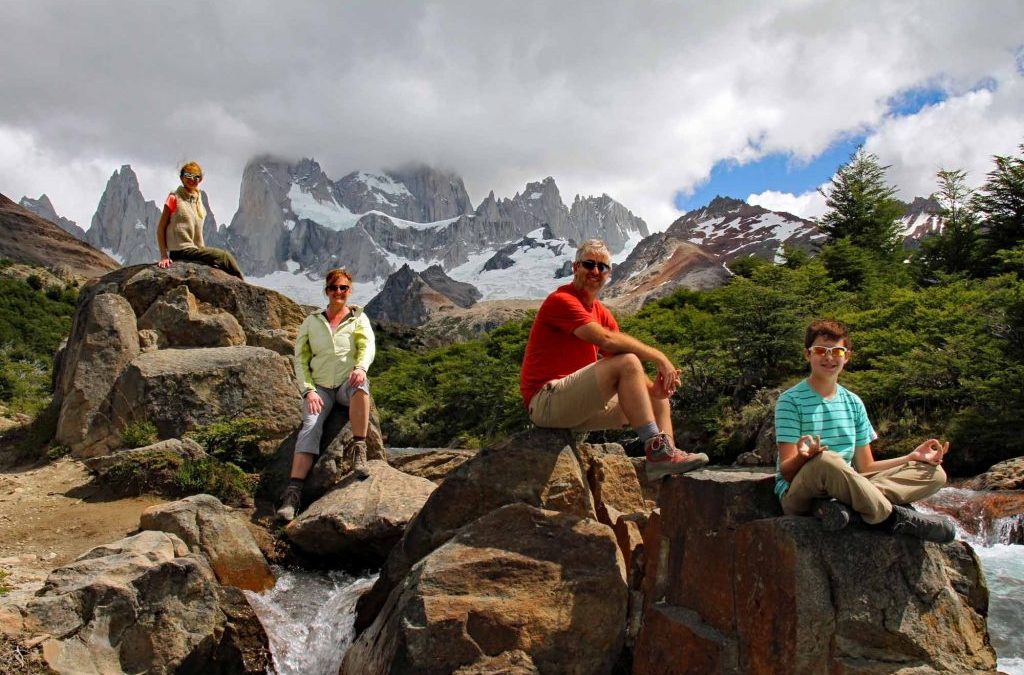
by Maile Bowles | Feb 7, 2018 | Maile, South America

Cerro Fitz Roy, near El Chalten.
I thought that all the hikes we did were spiffy. My favorite part was when we hiked on the glacier, Perito Moreno. We had to wear crampons–I felt like I was wearing lead boots. My Mom thought that we would be hiking on complete ice but, wrong, no points for Mom. There were many streams of water on the glacier. My Dad said that it was like hiking on a snow cone. I saw one of the hiking trails going vertical, and with crampons on we were able to climb it. After we took the crampons off, I felt like I was walking on air! Then we went on a small little trail to get to a lookout. We were able to see huge chunks of ice fall off of the glacier.
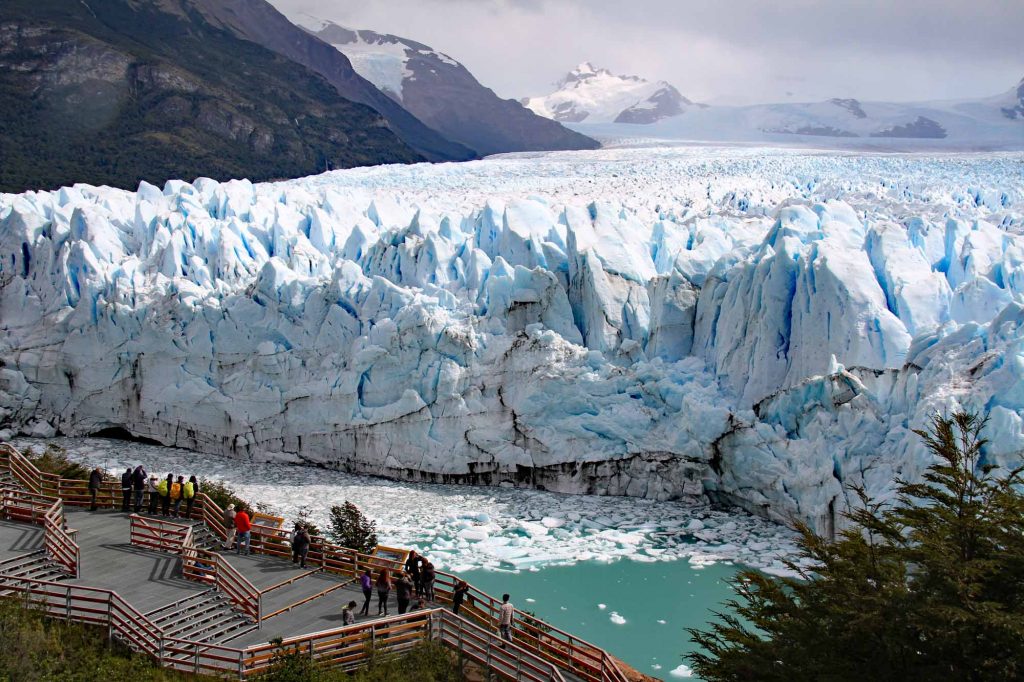

by Alex Bowles | Feb 7, 2018 | Alex, South America
Argentina is a jolly good spot for seeing, and drinking from, glaciers. While we stayed in El Chalten we hiked on the first day to a lookout of Cerro Fitz Roy. The second day we hiked to where the Grand Glacier and Torre Glacier came together to form Laguna Torre. In Laguna Torre,
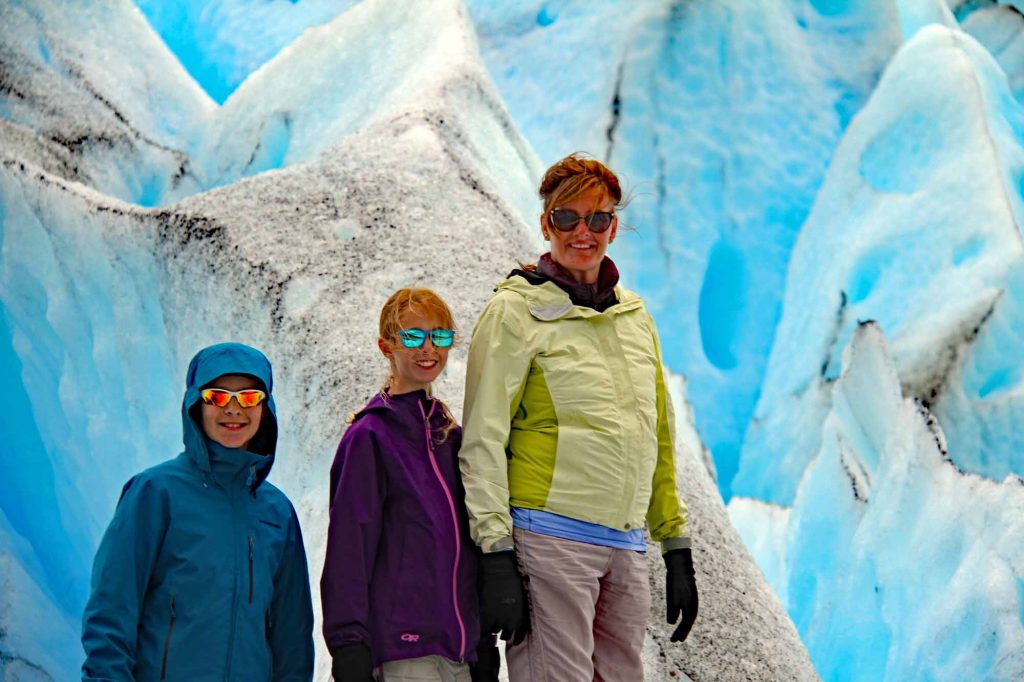
Trekking on the Perito Moreno Glacier.
we saw many icebergs in the lake and we put some of the ice chunks in our water. On the way back, we saw six Andean Condors, two of which were fighting. When we were in El Calafate, we hiked to, and on the Perito Moreno Glacier. While we were on the glacier, Maile and I would constantly take chunks of ice from the glacier and drink them. The following day we boarded a bus to Puerto Natales. From there we boarded a bus to Punta Arenas. The bus rides took a total of 13 hours.

















